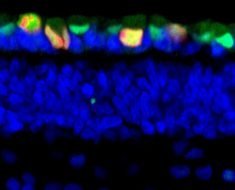
In cinema and science fiction, one small change in the past can have major, sometimes life-changing effects in the future. Using a series of snapshots, researchers recently captured such so-called “butterfly effects” in heart muscle cell development, and say this new view into the sequence of gene expression activity may lead to better understanding disease risk.
The study, published June 28 in Science, identified hundreds of DNA regions that are associated with differences in gene expression between individuals.
“The human genome has been studied extensively, but how each person’s cells use the genome is complex, dynamic, and not as well understood. In this study we looked for cases where genetic differences between people change during cell development,” says Alexis Battle, an Associate Professor of Biomedical Engineering at the Johns Hopkins University and one of the paper’s senior authors.
While previous studies have identified thousands of expression quantitative trait locus (eQTL), or regions of DNA that can affect gene expression, they’ve relied on data collected at a single time point, says Battle. But many of these differences in expression can actually occur at different stages of development or depend on environment, leading researchers to potentially miss disease associations that can’t be studied in fully-developed tissue.
“Those associations are like shooting stars,” says Yoav Gilad, Chief of Genetic Medicine at the University of Chicago and the other senior author of the study. “They appear at one point and never again during development, and they might actually be important to the phenotype of the mature tissue and maybe even disease. But unless you study those particular cell types at that particular time, you’ll never see them.”
To find these fleeting associations, the team used induced pluripotent stem cells, a type of master stem cell that can become nearly any type of cell, that here then differentiated into cardiomyocytes, or heart muscle cells.
The research team sampled RNA from the cells of 19 people once a day over 16 days as they developed into heart muscle cells. To Battle’s knowledge, this effort is the first large time-course study of gene expression in heart muscle cells in multiple individuals, with the largest number of time points sampled.
By obtaining gene expression data every day, the researchers gained important information about gene expression during the in-between stages when a cell is neither a new stem cell nor a fully-formed heart muscle cell.
These fleeting differences during cellular development could potentially account for differences in risk for complex diseases such as cancer, heart disease or diabetes, that aren’t caused by a single genetic mutation, but possibly hundreds. On their own, each of these small mutations don’t affect your overall health dramatically, but together they can elevate risk for particular diseases. The new research shows that these small genetic differences could impact gene expression at many points along the way.
“To fully understand how genetics impacts disease risk, we’ll ultimately have to consider all the different cell types, developmental time points and environmental conditions that could be relevant to different diseases. This study is one step in that direction,” says Battle.
Source: Read Full Article





